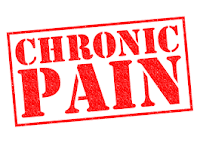• Six in ten say they or
someone in their immediate family have a chronic health condition that requires
ongoing medical treatment. Compared to those without chronic conditions, these
individuals are more likely to report having a hard time paying medical bills.
One-third (35 percent) of those dealing with a chronic condition requiring
ongoing medical care say they or their household have had problems paying
medical bills in the past 12 months, compared to one-fourth (27 percent) of the
overall public.
• The majority of the public
are aware that heart disease, diabetes, asthma, mental health illness, cancer,
and arthritis are all illnesses that are considered “chronic diseases,” but
less than three in ten are aware of the prevalence of chronic diseases in this
country nor how much of health spending is spent treating chronic diseases.
Note that 2/3 of adults living in the US have at least one chronic condition
and ¾ of all health care costs are for chronic conditions.
• Seven in ten Americans say
chronic diseases are usually due to factors and circumstances beyond a person’s
control, while fewer say people who have chronic diseases mostly have
themselves to blame for their condition. Despite this, half of the public
(including half of those dealing with a chronic illness) say individuals
themselves should play the largest role in helping to prevent individuals in this
country from getting chronic diseases. This is larger than the share who say
the same about health care providers, the government, or employers and
businesses.
• Among
those dealing with a chronic health condition (either themselves or an
immediate family member) the majority (55 percent) say they are or their family
member are doing “everything” they can to prevent the condition from getting
worse while an additional one-third (35 percent) say they are doing “many but
not all the things” they could do to prevent the condition from getting worse.
Fewer (9 percent of those dealing with a chronic health condition) say they are
doing “just a few things” or “none of the things” to prevent the condition from
getting worse.
• When asked whether they
favor or oppose various policy proposals aimed at preventing or managing
chronic diseases, a majority of the public say they favor proposals aimed at
promoting healthy behaviors but fewer say they favor other proposals that
either ban or tax unhealthy choices. There are some partisan differences with
larger shares of Democrats and independents favoring all of the policy
proposals compared to Republicans.
Does public opinion matter? Yes, because it is voters who elect politicians who make the decisions about whether to fund and
set policy about prevention programs, health insurance and more. Health care, particularly chronic care,
shouldn’t be a political party decision but it is. Public opinion absolutely
shapes the ideas that spread across America and it starts with your home state.
This strategies mapped out in
Living With Chronic Conditions:What to Do Now that Trump is Elected are as
relevant today as when I wrote that post in Nov. 2016. Basically, if you want
things to change:
-
become part of a condition specific organization
- be an activist
- be
an e patient and share your data
- boost
your social capital
- reduce
your carbon footprint
- support
organizations (locally whenever possible) that are working with vulnerable
communities and are seeking equality for all












